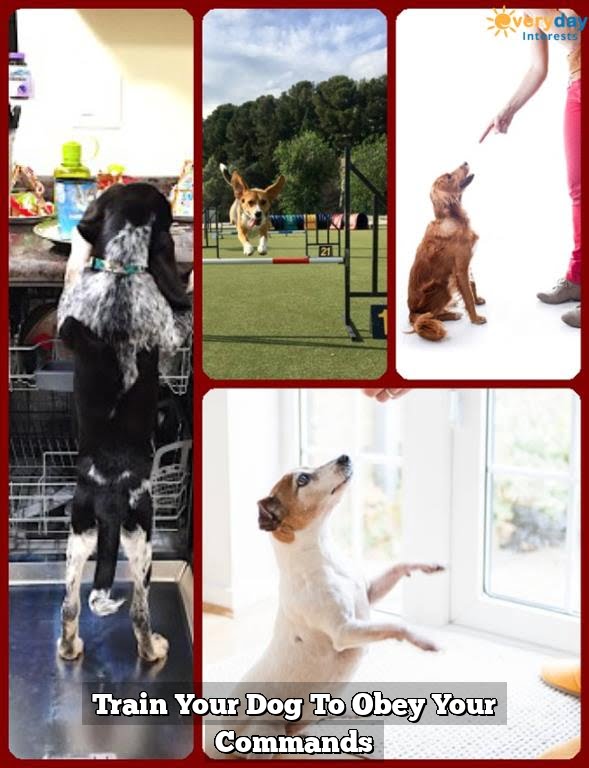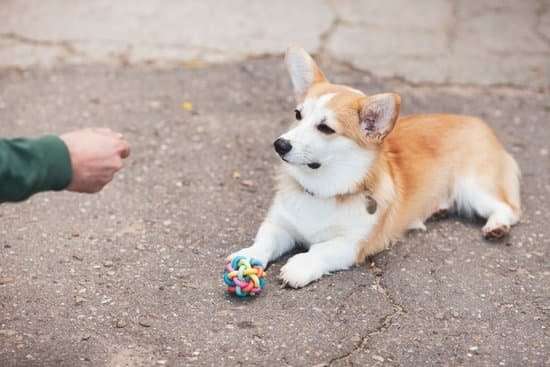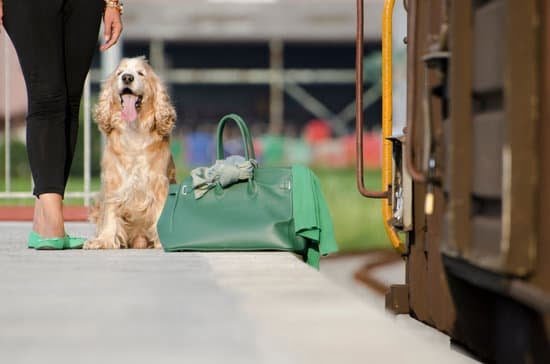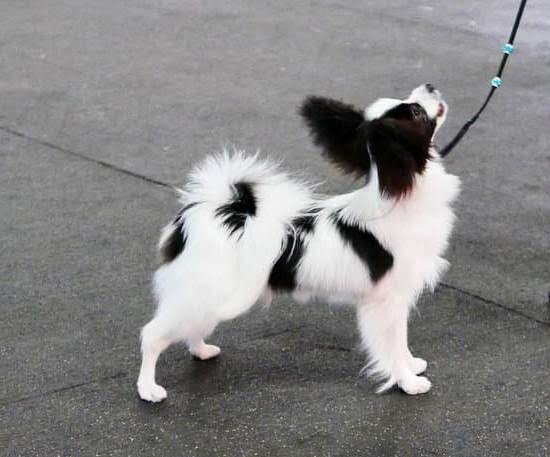Training your dog is essential for their overall well-being and happiness. It not only helps you establish control and manage their behavior, but it also strengthens the bond between you and your furry friend. The Royal Society for the Prevention of Cruelty to Animals (RSPCA) recognizes the significance of dog training and offers valuable resources and support to pet owners seeking guidance.
In this article, we will explore the importance of training your dog for their well-being. We will delve into the benefits of training, including how it positively impacts their behavior and overall happiness. Additionally, we will provide a step-by-step guide on successful dog training, starting with preparing a safe environment for them and building trust and bonding.
Basic obedience training is an essential component that we will cover in this article. Teaching your dog essential commands ensures their safety and control in various situations. We will also address common behavioral issues and provide techniques to correct them, ultimately improving your dog’s behavior.
Throughout this article, we’ll emphasize the power of positive reinforcement in training your dog. Rewards and praise play a significant role in motivating and reinforcing desired behaviors. Moreover, we’ll discuss advanced training techniques that take your dog’s skills to the next level while maintaining their mental stimulation.
Partnering with the RSPCA can greatly enhance your dog training journey. As renowned animal welfare experts, they offer expert resources and support to ensure you have all the tools necessary for success. By unlocking the potential of your dog through effective training techniques, you can foster a lifetime of learning, consistency, and mutual understanding.
Continue reading to uncover all you need to know about how to train your beloved canine companion in partnership with RSPCA – because a well-trained happy pup makes for a fulfilled owner.
Benefits of Training Your Dog
Training your dog is not only important for their well-being, but it also has a positive impact on their behavior and overall happiness. When you invest time and effort into training your dog, you are providing them with structure, guidance, and mental stimulation. This not only helps to prevent behavioral issues but also enhances their quality of life.
Improved Behavior
Training your dog allows you to teach them how to behave appropriately in various situations. By establishing clear boundaries and expectations, you can prevent unwanted behaviors such as excessive barking, digging, or jumping on people. With consistent training, your dog will understand what is expected of them and will be able to make better choices.
Enhanced Bonding
Training sessions provide an opportunity for you and your dog to bond and strengthen your relationship. Through positive reinforcement and rewarding good behavior, you establish trust and build a deep connection with your furry friend. Training can be a fun and engaging activity that allows you both to work together as a team, forging a strong partnership based on trust and respect.
Increased Safety
Basic obedience training is essential for the safety of your dog. Teaching commands such as “sit,” “stay,” or “come” can potentially save their life in dangerous situations. For example, if your dog sees a squirrel across the road, having a solid recall command will enable you to call them back before they dart into traffic. Training also helps create calmness and focus in high-stress situations like visits to the vet or encounters with other animals.
In conclusion,
training your dog has numerous benefits that enhance their behavior, well-being, and happiness. Not only does it provide structure and guidance for them, but it also strengthens the bond between you both. Additionally, training ensures better safety for your furry friend by teaching them essential commands that may help prevent accidents or dangerous situations. So, make the commitment to train your dog and unlock their full potential with the RSPCA’s expert resources and support.
Step 1
Training your dog requires a well-prepared environment that promotes safety, positivity, and comfort. Creating the right setting for training sessions will help set your dog up for success. Here are some essential steps to prepare a successful training environment:
- Make sure the space is safe: Before starting any training session, it’s important to ensure that the area is free from hazards or distractions that could impede your dog’s focus. Remove any objects that can be potentially dangerous or tempting for your dog to play with.
- Minimize distractions: Dogs can easily get distracted, so it’s crucial to minimize environmental stimuli during training sessions. Choose a quiet and calm location in your home where you can minimize interruptions. Close windows or use curtains to block visual distractions from outside.
- Gather necessary training tools: Having the right tools on hand will make your training sessions more effective. Some essential items include treats, a clicker (if using clicker training), a leash, and a comfortable collar or harness for control.
- Make it comfortable: Your dog should feel relaxed and comfortable during training sessions. Ensure that the temperature in the room is appropriate for their breed and provide them with a comfortable bed or mat to lie down on during breaks.
To further enhance the positive environment, consider incorporating these additional elements into your training space:
- Use an incentive zone: Designate an area within the training space where you keep rewards such as treats or toys. This creates an incentive zone where your dog knows they can earn rewards by following commands correctly.
- Provide interactive toys: Keeping some interactive toys nearby can help redirect your dog’s energy and provide mental stimulation when giving them short breaks between exercises.
- Set up visual cues: Utilize visual cues to assist with commands during the learning process. For example, you can place sticky notes around the room to remind yourself of specific actions or gestures associated with particular commands.
By ensuring a safe and positive environment, you set the stage for successful dog training. Remember to make it an enjoyable experience for both you and your furry friend. With a well-prepared training space, you can focus on building a strong foundation of trust and effective communication with your dog.
Step 2
Building a strong foundation of trust and bonding with your dog is crucial in the training process. This step is not only important for effective training but also for the overall well-being and happiness of your dog. By establishing a solid relationship based on trust and mutual understanding, you create a positive environment that encourages learning and cooperation.
Spending Quality Time Together
One of the key ways to build trust and bonding with your dog is by spending quality time together. This means dedicating regular one-on-one time for activities such as walks, playtime, or simply cuddling on the couch. These moments allow you to connect with your dog on an emotional level and strengthen your bond.
When engaging in activities with your dog, be fully present and attentive. Show genuine interest in their needs, desires, and experiences. This will help your dog feel valued and understood, enhancing the trust between you both.
Positive Reinforcement
Using positive reinforcement techniques is another effective way to build trust with your dog during training. Reward-based training methods involve using treats, praise, toys, or other forms of positive reinforcement to motivate desired behavior.
When your dog performs a command correctly or exhibits good behavior, reward them immediately with something they love. This helps them associate obedience with positive outcomes and builds their trust in you as their trainer. It’s important to remember that consistency is key when implementing positive reinforcement techniques.
Patience and Consistency
Building trust takes time, especially if you have recently adopted a new dog or are working with a rescue who may have experienced trauma in the past. Patience is essential during this process as each dog learns at their own pace. Be mindful of not pushing too hard or expecting immediate results.
Consistency is also crucial when building trust and bonding with your dog. Setting clear boundaries and expectations establishes a sense of security for them. Stick to consistent routines, cues, and rewards to help your dog understand what is expected of them.
By investing time and effort in building trust and bonding with your dog, you create a solid foundation for successful training. This step lays the groundwork for effective communication, cooperation, and a positive learning experience. Remember to always approach this process with love, patience, and understanding to unlock the potential of your dog and strengthen your relationship.
Step 3
Basic obedience training is an important aspect of dog training that focuses on teaching your dog essential commands for their safety and control. By mastering these commands, your dog will not only become well-behaved but also be able to respond appropriately in various situations. In this step, we will explore some of the essential commands that you can teach your dog and techniques to make the training process effective.
Sit
Teaching your dog to sit is one of the basic commands that can be incredibly useful in everyday situations. To start, hold a treat close to your dog’s nose and move it upward, causing their head to follow the treat and lowering their hindquarters into a sitting position naturally.
As soon as they are in a sitting position, say “sit” and reward them with the treat while praising them. Repeat this command several times until they learn to associate the word “sit” with the action.
Stay
The “stay” command is crucial for ensuring your dog’s safety in various situations, such as when crossing roads or greeting guests at the door. Begin by telling your dog to sit, then extend your hand towards them with an open palm while saying “stay” firmly.
Step back a couple of steps, then return to them immediately and reward them with a treat if they stay in place. Gradually increase the distance between you and your dog while maintaining eye contact and using hand signals until they can stay in place for longer durations.
Recall
Teaching your dog to come when called is vital for their safety and control during off-leash activities or emergency situations. Start by getting down low and calling your dog’s name followed by “come” with enthusiasm, using gestures like clapping or patting your thighs to encourage them towards you.
Once they reach you, reward them with praise and treats. Practice this command in various environments and gradually increase the distance so that your dog learns to come to you reliably.
Remember that consistency, patience, and positive reinforcement are key when training your dog. Short and frequent training sessions work best, as dogs have short attention spans. Always end each session on a positive note and be consistent with your commands and rewards. With time and practice, your dog will become well-versed in these basic commands, ensuring their safety and control in various situations.
Step 4
Training your dog not only involves teaching them basic obedience commands, but it also requires addressing any behavioral issues that may arise. By understanding and correcting these common problems, you can help improve your dog’s overall behavior and create a harmonious relationship with them. Here are some techniques to address behavioral issues in your dog:
- Identifying the problem: The first step in addressing behavioral issues is to identify the root cause of the problem. Whether it is excessive barking, aggression, separation anxiety, or chewing on furniture, understanding why your dog engages in such behaviors is crucial in finding a solution.
- Positive reinforcement: Once you have identified the problem behavior, it is important to use positive reinforcement techniques to correct it. This means rewarding your dog for good behavior and ignoring or redirecting negative behavior. For example, if your dog jumps on people when they enter the house, teach them an alternative behavior like sitting politely and reward them when they do so.
- Consistency and patience: Consistency is key when addressing behavioral issues. Make sure everyone in your household understands the training techniques being used and follows them consistently. It takes time for dogs to unlearn certain behaviors and develop new ones, so be patient and persistent in your training efforts.
- Seek professional help if needed: If you are struggling to address a specific behavioral issue or if your dog’s behavior is causing significant problems or safety concerns, consider seeking professional help from a certified dog trainer or animal behaviorist. They can provide guidance tailored to your dog’s specific needs and help you overcome any challenges you may be facing.
Remember that every dog is unique, and what works for one might not work for another. Be adaptable in your training methods and always prioritize positive reinforcement over punishment. With dedication and consistent effort, you can successfully address behavioral issues and improve your dog’s behavior.
Sources:
- RSPCA: Training and Behavior
- American Society for the Prevention of Cruelty to Animals (ASPCA): Dog Behavior and Training
Advanced Training Techniques
Once your dog has mastered the basic obedience training and commands, you can take their skills to the next level by introducing advanced training techniques. These techniques not only challenge your dog mentally but also provide them with the mental stimulation they need to stay happy and engaged.
One of the advanced training techniques you can incorporate is agility training. Agility training involves teaching your dog to navigate through various obstacles such as jumps, tunnels, weave poles, and ramps. Not only does this type of training provide physical exercise for your dog, but it also helps improve their coordination, balance, and overall confidence.
Another advanced training technique is scent work. Dogs have an incredible sense of smell, and by engaging them in scent work activities, you can tap into their natural instincts. Scent work involves teaching your dog to search for specific scents or objects using their nose. This type of training is not only mentally stimulating but can also be a great way to bond with your dog.
Trick training is also an excellent way to take your dog’s skills to the next level. Teach them fun and entertaining tricks like “roll over,” “play dead,” or even more complex tricks like “fetch a specific object” or “shake hands.” Trick training not only impresses friends and family but also keeps your dog mentally active and eager to learn new things.
Overall, advanced training techniques are a great way to challenge your dog’s skills while providing mental stimulation. Remember to always keep sessions short, positive, and rewarding for optimum effectiveness. By continuously challenging your dog with new tasks and exercises, you can help maintain their well-being and further strengthen the bond between you and your furry friend.
| Advanced Training Techniques | Description |
|---|---|
| Agility Training | Teaching your dog to navigate through various obstacles such as jumps, tunnels, weave poles, and ramps. |
| Scent Work | Engaging your dog in activities that involve searching for specific scents or objects using their nose. |
| Trick Training | Teaching your dog fun and entertaining tricks like “roll over,” “play dead,” or more complex tricks like “fetch a specific object” or “shake hands.” |
Incorporating Positive Reinforcement
Positive reinforcement is a crucial component of effective dog training. Understanding the power of rewards and praise can greatly enhance your dog’s learning experience and motivation. By incorporating positive reinforcement techniques, not only will you improve your dog’s behavior, but you will also strengthen the bond between you and your furry companion.
One of the fundamental principles of positive reinforcement training is rewarding desired behaviors. When your dog performs a command correctly or exhibits good behavior, it is important to immediately acknowledge and reward them. This can be done through treats, praise, or playtime, depending on what motivates your individual dog. The key is to find something that your dog finds highly rewarding and use it consistently during training sessions.
Rewards should be delivered promptly to reinforce the desired behavior effectively. Dogs live in the present moment, so delayed rewards may not have the same impact as immediate ones. Additionally, rewards should be varied to keep your dog engaged and motivated. Mixing up treats or using different types of praise can prevent boredom and maintain enthusiasm during training.
In addition to rewards, verbal praise plays a significant role in positive reinforcement training. Dogs are highly attuned to their human’s tone of voice, so using an upbeat and enthusiastic tone when giving praise can make a big difference in their response. Verbal cues such as “good job” or “well done” signal to your dog that they are on the right track and encourage them to continue exhibiting the desired behavior.
By incorporating positive reinforcement techniques into your training sessions, you create a positive association between learning and reward for your dog. This approach fosters an environment where your dog is eager to learn new commands and behaviors because they know there is something enjoyable waiting for them at the end. Ultimately, this leads to more successful outcomes in training and a happier, more well-behaved canine companion.
| Benefits of Incorporating Positive Reinforcement | Data |
|---|---|
| Enhanced learning experience for your dog | Increased motivation in training sessions |
| Strengthened bond between you and your dog | Improved behavior and obedience |
| Increased enthusiasm for learning new commands and behaviors | Fostered positive association with training |
The Role of the RSPCA in Dog Training
The Royal Society for the Prevention of Cruelty to Animals (RSPCA) plays a crucial role in dog training, providing expert resources and support for both novice and experienced dog owners. As a renowned animal welfare organization, the RSPCA places great emphasis on positive reinforcement techniques and humane training methods, ensuring that dogs are trained in a safe and compassionate manner.
One of the key resources offered by the RSPCA is their extensive library of training materials. These materials cover a wide range of topics, including basic obedience training, addressing behavioral issues, and advanced training techniques. Whether you are just starting out or looking to refine your skills as a dog owner, these resources provide valuable guidance and advice on how to effectively train your furry friend.
In addition to their comprehensive training materials, the RSPCA also offers various classes and workshops for dog owners. These classes are taught by certified trainers who follow the RSPCA’s principles of positive reinforcement. By attending these classes, dog owners not only gain hands-on experience but also have access to personalized feedback and guidance from experts in the field. This direct support can be invaluable in addressing specific challenges or concerns that may arise during the training process.
Overall, partnering with the RSPCA in your dog’s training journey ensures that you have access to reliable information, expert guidance, and ongoing support throughout the process. By utilizing these resources and taking advantage of their expertise, you can enhance your dog’s learning experience while also promoting their well-being. Through effective training with the help of the RSPCA, you can strengthen your bond with your canine companion while also ensuring that they lead happy and fulfilling lives.
| Benefits of Partnering with RSPCA | Examples |
|---|---|
| Access to comprehensive training materials | Detailed guides on basic obedience training, behavioral correction techniques, and advanced training methods. |
| Opportunity to attend classes and workshops | Participate in group training sessions with certified trainers who follow positive reinforcement methods. |
| Expert guidance and personalized feedback | Receive individualized support from experienced trainers to address specific challenges or concerns. |
Training for a Lifetime
Training your dog is not a one-time event, but rather a lifelong journey that requires consistency and continued learning. Here are some tips to help you maintain the training you have already accomplished and continue fostering a strong bond with your furry friend.
- Consistency is Key: Dogs thrive on routine, so it’s important to establish consistent rules and expectations throughout their life. This means using the same commands and cues, reinforcing positive behaviors regularly, and avoiding mixed messages. Consistency will help your dog understand what is expected of them and make training more effective.
- Practice Makes Perfect: Just like any skill, regular practice is essential for maintaining your dog’s training. Set aside time each day to work on obedience commands or engage in stimulating activities to keep their mind sharp. Incorporating short training sessions into your daily routine can be fun for both you and your dog.
- Continue Learning Together: Training shouldn’t stop at basic obedience commands. Challenge your dog with new tricks or advanced skills to keep them mentally engaged. This could include teaching them agility exercises, scent detection games, or even participating in canine sports such as flyball or rally obedience.
Seek Support When Needed
If you encounter any setbacks or struggles during the training process, don’t hesitate to seek support from professionals or fellow dog owners. The RSPCA offers a wealth of resources and expertise when it comes to dog training. They provide workshops, classes, online resources, and individual consultations to help address specific behavior problems or further enhance your dog’s skills.
Remember that every dog is different, so the approach to training may vary depending on their breed, age, and individual personality traits. Patience and understanding are key when working towards a well-behaved and happy canine companion. With continued commitment and a positive mindset, you can unlock the full potential of your dog through effective training in partnership with the RSPCA.
Conclusion
In conclusion, training your dog is not only important for their well-being but also has numerous benefits for their behavior and overall happiness. By following the steps outlined in this article, you can create a safe and positive environment for your dog, establish a strong bond with them, teach essential commands, address behavioral issues, and even take their skills to an advanced level.
One crucial aspect of successful dog training is incorporating positive reinforcement. Rewards and praise have a significant impact on motivating and encouraging desired behaviors in dogs. By utilizing the power of rewards and praise, you can effectively train your dog and strengthen your bond with them.
The RSPCA plays a vital role in supporting dog owners in their training journey. As a renowned animal welfare organization, they provide expert resources and support to help guide you through the process. Whether you need assistance with basic obedience training or addressing behavioral issues, the RSPCA is there to offer guidance and expertise.
Remember that training your dog is a lifelong commitment. Consistency and continued learning are key to unlocking your dog’s full potential. By maintaining consistency in your training methods and continuing to expand their skills as they grow older, you can ensure that your furry friend leads a happy and fulfilled life.
In partnership with the RSPCA, you have access to valuable resources that can aid you throughout this journey. From establishing trust and bonding with your dog to addressing behavioral issues and advancing their training, the RSPCA is committed to helping you unlock the potential of your beloved pet through effective training methods.
With patience, dedication, and the support of the RSPCA, you can transform your furry companion into a well-behaved member of society who brings joy to your life every day.
Frequently Asked Questions
What are the 5 golden rules of dog training?
The 5 golden rules of dog training are fundamental principles that help create a strong foundation for effective training. Firstly, consistency is key in dog training. Dogs thrive on routines and repetition, so it’s crucial to be consistent with commands and expectations. Secondly, positive reinforcement should be used to reward desired behaviors and motivate dogs to learn.
Thirdly, clear communication is vital – using distinct commands and body language helps the dog understand what is expected of them. Fourthly, patience is essential as dogs may take time to grasp new concepts or behaviors. Finally, timing is crucial when providing feedback or rewards – it needs to be immediate for the dog to associate it correctly.
What is the best dog training method?
While there isn’t one universally recognized “best” dog training method, positive reinforcement tends to be widely regarded as highly effective and humane. This method involves rewarding desirable behaviors with praise, treats, or playtime rather than using punishment or intimidation.
Positive reinforcement builds a positive association between desired behaviors and rewards, making learning more enjoyable for the dog while fostering a stronger bond between trainer and pet.
What is the most humane way to train a dog?
The most humane way to train a dog focuses on positive reinforcement techniques without resorting to physical force or aversive methods. Positive reinforcement allows for teaching dogs desired behaviors through rewards such as treats or praise instead of using fear or punishment-based techniques which can damage the animal-human relationship and potentially lead to stress or aggression issues in dogs.
Training based on building trust and understanding through patience, consistency, compassion, and encouraging good behavior ensures a more humane approach that keeps both the physical and emotional well-being of the dog at its core.

Welcome to the blog! I am a professional dog trainer and have been working with dogs for many years. In this blog, I will be discussing various topics related to dog training, including tips, tricks, and advice. I hope you find this information helpful and informative. Thanks for reading!





